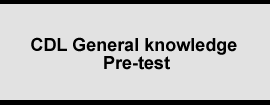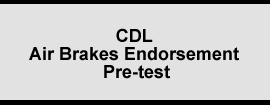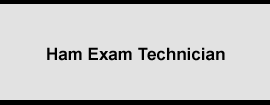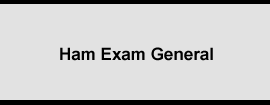ham exam 2 technician Pretest
T1C04
1. When are you allowed to operate your amateur station in a foreign country?
- A. When there is a mutual agreement allowing third party communications
- B. When the foreign country authorizes it
- C. When authorization permits amateur communications in a foreign language
- D. When you are communicating with non-licensed individuals in another country
T8B11
2. What is a commonly used method of sending signals to and from a digital satellite?
- A. USB AFSK
- B. PSK31
- C. WSJT
- D. FM Packet
T0C08
3. Which of the following actions might amateur operators take to prevent exposure to RF radiation in excess of FCC-supplied limits?
- A. Relocate the transmitter
- B. Relocate antennas
- C. Increase the duty cycle
- D. All of these choices are correct
T5D06
4. What is the resistance of a circuit that draws 4 amperes from a 12-volt source?
- A. 8 Ohms
- B. 16 ohms
- C. 48 ohms
- D. 3 ohms
T3B08
5. What are the frequency limits of the VHF spectrum?
- A. 30 to 300 MHz
- B. 30 to 300 kHz
- C. 300 to 3000 kHz
- D. 300 to 3000 MHz
T6B06
6. How is the cathode lead of a semiconductor diode usually identified?
- A. With the letter C
- B. All of these choices are correct
- C. With a stripe
- D. With the word cathode
T6A04
7. What electrical component stores energy in an electric field?
- A. Diode
- B. Resistor
- C. Capacitor
- D. Inductor
T5B04
8. How many volts are equal to one microvolt?
- A. One thousand kilovolts
- B. One one-millionth of a volt
- C. One one-thousandth of a volt
- D. One million volts
T2C02
9. What is one way to recharge a 12-volt lead-acid station battery if the commercial power is out?
- A. Connect the battery in parallel with a vehicle's battery and run the engine
- B. Add acid to the battery
- C. Cool the battery in ice for several hours
- D. All of these choices are correct
T1E01
10. When is an amateur station permitted to transmit without a control operator?
- A. When the transmitting station is an auxiliary station
- B. When the station licensee is away and another licensed amateur is using the station
- C. When using automatic control, such as in the case of a repeater
- D. Never
T3A03
11. What antenna polarization is normally used for long-distance weak-signal CW and SSB contacts using the VHF and UHF bands?
- A. Right-hand circular
- B. Vertical
- C. Left-hand circular
- D. Horizontal
T8D04
12. What type of transmission is indicated by the term NTSC?
- A. A Normal Transmission mode in Static Circuit
- B. A frame compression scheme for TV signals
- C. An analog fast scan color TV signal
- D. A special mode for earth satellite uplink
T8C03
13. What popular operating activity involves contacting as many stations as possible during a specified period of time?
- A. Simulated emergency exercises
- B. Contesting
- C. Net operations
- D. Public service events
T9B08
14. Why should coax connectors exposed to the weather be sealed against water intrusion?
- A. To prevent interference to telephones
- B. To keep the jacket from becoming loose
- C. All of these choices are correct
- D. To prevent an increase in feed line loss
T1B07
15. What amateur band are you using if you are transmitting on 223.50 MHz?
- A. 10 meter band
- B. 2 meter band
- C. 15 meter band
- D. 1.25 meter band
T2B09
16. Which of the following methods is encouraged by the FCC when identifying your station when using phone?
- A. Use of a phonetic alphabet
- B. Increase your signal to full power when identifying
- C. Repeat your call sign three times
- D. Send your call sign in CW as well as voice
T7B05
17. How can overload of a non-amateur radio or TV receiver by an amateur signal be reduced or eliminated?
- A. Block the amateur signal with a filter at the antenna input of the affected receiver
- B. Block the interfering signal with a filter on the amateur transmitter
- C. Switch the transmitter to a narrow-band mode
- D. Switch the transmitter from FM to SSB
T3C11
18. Why do VHF and UHF radio signals usually travel somewhat farther than the visual line of sight distance between two stations?
- A. Radio signals move somewhat faster than the speed of light
- B. The Earth seems less curved to radio waves than to light
- C. Radio waves are not blocked by dust particles
- D. Radio waves are blocked by dust particles
T7C03
19. What, in general terms, is standing wave ratio (SWR)?
- A. A measure of how well a load is matched to a transmission line
- B. The ratio of high to low impedance in a feed line
- C. An indication of the quality of your station's ground connection
- D. The transmitter efficiency ratio
T1A08
20. Which of the following entities recommends transmit/receive channels and other parameters for auxiliary and repeater stations?
- A. FCC Regional Field Office
- B. Frequency Coordinator
- C. International Telecommunications Union
- D. Frequency Spectrum Manager
T8A05
22. Which of the following types of emission has the narrowest bandwidth?
- A. Slow-scan TV
- B. FM voice
- C. CW
- D. SSB voice
T5C09
23. How much power is being used in a circuit when the applied voltage is 13.8 volts DC and the current is 10 amperes?
- A. 23.8 watts
- B. 0.7 watts
- C. 3.8 watts
- D. 138 watts
T4B06
24. Which of the following controls could be used if the voice pitch of a single-sideband signal seems too high or low?
- A. The tone squelch
- B. The receiver RIT or clarifier
- C. The AGC or limiter
- D. The bandwidth selection
T7A06
25. What device takes the output of a low-powered 28 MHz SSB exciter and produces a 222 MHz output signal?
- A. High-pass filter
- B. Low-pass filter
- C. Phase converter
- D. Transverter
T7D01
26. Which instrument would you use to measure electric potential or electromotive force?
- A. An ammeter
- B. A wavemeter
- C. An ohmmeter
- D. A voltmeter
T0A05
27. Why is it unwise to install a 20-ampere fuse in the place of a 5-ampere fuse?
- A. All of these choices are correct
- B. Excessive current could cause a fire
- C. The larger fuse would be likely to blow because it is rated for higher current
- D. The power supply ripple would greatly increase
T4A04
28. Where must a filter be installed to reduce harmonic emissions from your station?
- A. Between the receiver and the transmitter
- B. Between the transmitter and the antenna
- C. At the microphone
- D. At the station power supply
T0B02
29. What is a good precaution to observe before climbing an antenna tower?
- A. Remove all tower grounding connections
- B. Put on a climbing harness and safety glasses
- C. All of the these choices are correct
- D. Make sure that you wear a grounded wrist strap
T6D12
30. Which of the following is a common reason to use shielded wire?
- A. To prevent coupling of unwanted signals to or from the wire
- B. To increase the current carrying capability of the wire
- C. To decrease the resistance of DC power connections
- D. To couple the wire to other signals
T2A09
31. What brief statement is often transmitted in place of "CQ" to indicate that you are listening on a repeater?
- A. The words "Hello test" followed by your call sign
- B. The letters "QSY" followed by your call sign
- C. The repeater call sign followed by your call sign
- D. Your call sign
T5A03
32. What is the name for the flow of electrons in an electric circuit?
- A. Current
- B. Voltage
- C. Resistance
- D. Capacitance
T9A08
33. What is the approximate length, in inches, of a quarter-wavelength vertical antenna for 146 MHz?
- A. 50
- B. 112
- C. 19
- D. 12
T1D09
34. Under which of the following circumstances are amateur stations authorized to transmit signals related to broadcasting, program production, or news gathering, assuming no other means is available?
- A. Only when using amateur repeaters linked to the Internet
- B. Only when broadcasting communications to or from the space shuttle
- C. Only where noncommercial programming is gathered and supplied exclusively to the National Public Radio network
- D. Only where such communications directly relate to the immediate safety of human life or protection of property
T1F02
35. When using tactical identifiers such as "Race Headquarters" during a community service net operation, how often must your station transmit the station's FCC-assigned call sign?
- A. Never, the tactical call is sufficient
- B. At the end of each communication and every ten minutes during a communication
- C. Once during every hour
- D. At the end of every transmission
________________________________________





